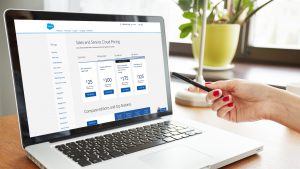With the imminent end of Marketing Cloud Discover reporting in April 2022, Datorama Reports was established as Salesforce’s new tool for Marketing Cloud reporting.
As part of Datorama, Reports provide a more robust and easier experience when viewing results. Similarly to Datorama (now Marketing Cloud Intelligence), Datorama Reports underwent a rebranding to Intelligence Reports for Engagement. Read on to find out everything you need to know about Datorama Reports.
What are Datorama Reports for Marketing Cloud?
Datorama Reports for Marketing Cloud, now called Intelligence Reports for Engagement, is a tool for generating, visualizing, and sharing in-depth analytics on email, push, and journey campaign data. It is worth noting that no data is shown at the subscriber or event level. This data, at the subscriber level, is used to generate the analysis of the entire campaign.
Datorama Reports show, for example, the number of emails or messages that were opened, delivered, or clicked on. The data shown are metrics added daily in such a way that it is possible to visualize the delivery and opening rate per day, for a period of 90 days. Since it operates on the basis of Datorama, these reports can connect all the data, therefore revealing critical information for the marketing team. In this way, it affects the optimization of the performance of each campaign and increases customer engagement.
Datorama Report Versions
Datorama Reports are available in two versions, one standard and one advanced. These are its characteristics:
- Datorama Reports (now Intelligence Reports for Engagement): This standard version includes dashboards, pivot tables, and reports. It shows simple statistics and its reports are intuitive.
- Datorama Reports Advanced (now Intelligence Reports for Engagement Advanced): This premium upgrade includes expanded capabilities for dashboards, pivot tables, reports, multi-channel apps, and query options. In addition, it incorporates more features and analysis to the standard version. It is available for an additional cost.
| Feature | Datorama Reports | Datorama Reports Advanced |
|---|---|---|
| View built-in dashboards | ✔ | ✔ |
| Create and manage reports | ✔ | ✔ |
| Create and manage pivot tables | ✔ | ✔ |
| Create and customize dashboards | – | ✔ |
| Create and manage calculated measurements and dimensions | – | ✔ |
| Query granular data | – | ✔ |
| View and install cross-channel apps | – | ✔ |
Main features of Datorama Reports
Dashboards
The tool has pre-built dashboards ready to use. They are intuitive and easy to manage through predefined filters. Through these dashboards, you can view engagement and delivery metrics such as open rate, clicks, bounces, unsubscribes, and more. With this information, your marketing team will be able to identify trends and anomalies quickly.
With the standard version, you can only access the dashboards already preconfigured in the tool, without the possibility of customizing them. However, with the premium advanced version, you can both create and customize these dashboards and access a library of over 60 widgets for creating and customizing dashboards specific to your business needs.
Pivot tables
This functionality allows data to be viewed from multiple perspectives. By selecting the dimensions (fields) and measures (metrics), you will be able to order and group large volumes of data adjusted to your needs through filters. You will be able to calculate and analyze data, make comparisons, as well as detect both patterns and trends. With pivot tables, you can also create custom reports with great flexibility in their structure.
Scheduled reports
Reports are an easy way to retrieve, visualize, and share in-depth analysis of your data. You can create reports from scratch or export a scheduled report from a dashboard or pivot table. You can easily share reports using Excel, CSV, and text formats, or opt for more visual representations such as PDF, PNG, and PowerPoint. Once the reports are created, they can be scheduled to be displayed at a specified time. These reports can be sent by any of the following methods: AzureBlob, email, FTP, FTPS, Google Drive, HDFS, SFTP, AWS – S3, and Google Cloud Storage.
Other features
– Types of data elements: There are two types of data elements available in Datorama Reports: dimensions and measures.
- Dimensions: qualitative (non-numeric) data that cannot be counted (campaign name, campaign ID)
- Measures: quantitative (numerical) data that can be counted (the number of clicks, emails opened)
The advanced premium version allows you to create fields with calculated elements that optimize the monitoring of a campaign in your company. In addition, it allows you to create custom KPIs and data extracts using the Data Lake Query function.
– Cross-channel Apps: Available only for the advanced premium version, Cross-channel apps allow data to be extracted from separate channels to connect, visualize, and cross-analyze the data. In other words, you can use ready-made applications to enrich the analysis with data from different channels.
– Methods for sharing information: You can disseminate the information of the Datorama Reports in a fluid way and without interrupting the flow of work. Your marketing team can share dashboards and widgets via Slack, email, or as locally downloaded files. Moreover, you can schedule when to share the reports.
Undoubtedly, Datorama Reports, or better called Intelligence Reports for Engagement, represents an improvement over its predecessor, Marketing Cloud Discover. Want to take a closer look at this tool? At SkyPlanner, we can help you. Feel free to write to us at hello@theskyplanner.com.



